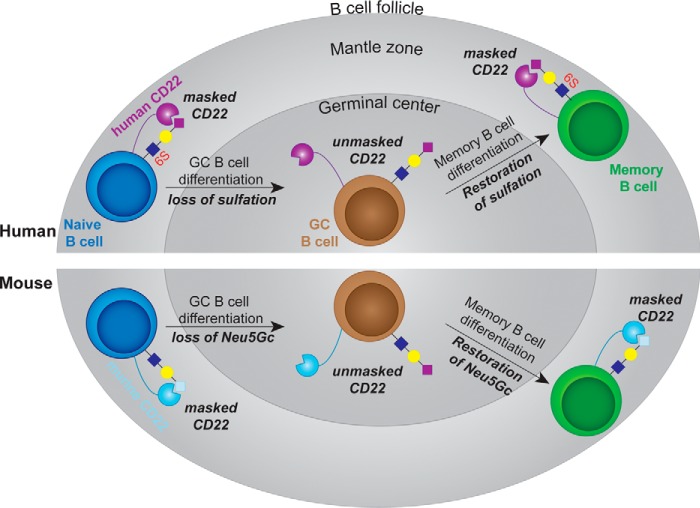FIGURE 9.
Model for the conserved nature of unmasking of CD22 in the GC of mice and humans. Top, in human, CD22 on naive B-cells in mantle zone is masked through interactions with its high affinity ligand (Neu5Acα2–6Galβ1–4(6S)GlcNAc). Loss of the sulfate modification on GC B-cells results in the appearance of Neu5Acα2–6Galβ1–4GlcNAc glycans, which have a lower affinity for human CD22. The lower affinity cis ligands on GC B-cells will place CD22 in an unbound state (unmasked) at a higher frequency, enabling it to interact better with trans ligands. This sulfate modification is restored on memory B-cells, returning CD22 to a masked state. Bottom, in mice, naive B-cells have abundant levels of Neu5Gcα2–6Galβ1–4GlcNAc, the preferred ligand of murine CD22, maintaining CD22 in a masked state. Loss of Neu5Gc on GC B-cells results in the appearance of glycans terminating in Neu5Acα2–6Galβ1–4GlcNAc, which unmasks CD22 due to the lower binding affinity of murine CD22 for the NeuAc-containing glycan. Paralleling the results in humans, the high affinity ligand of murine CD22 is restored on memory B-cells, returning CD22 to a masked state.

